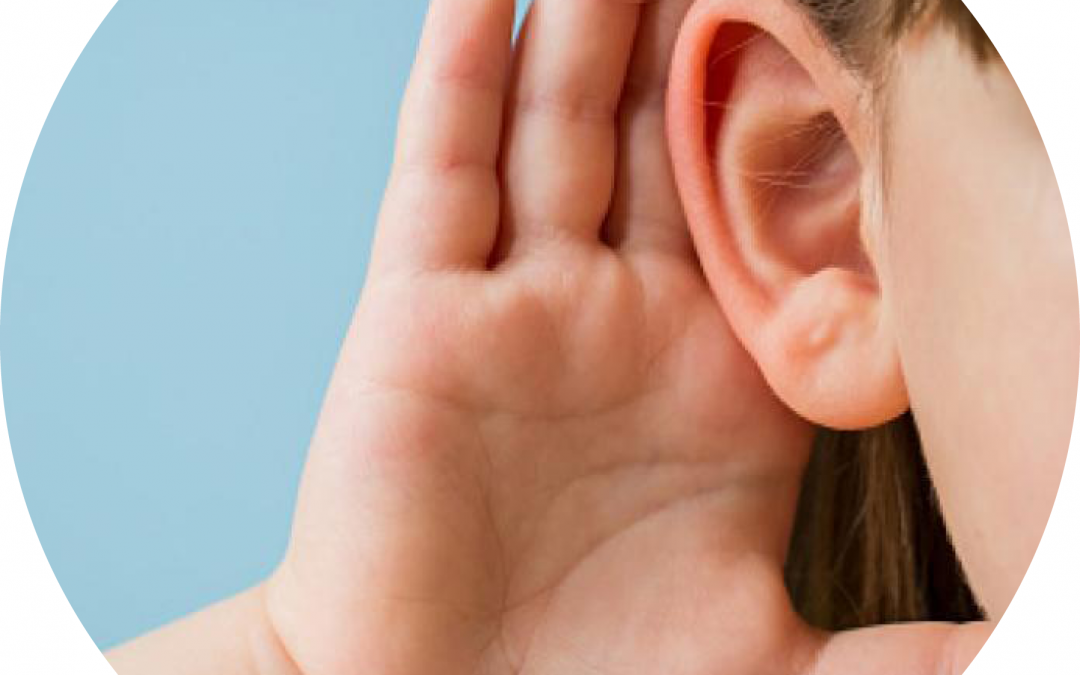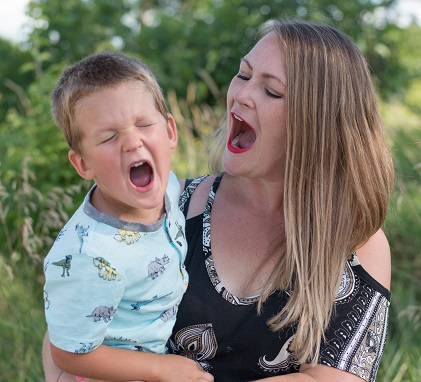
by IABA Team | Aug 3, 2021
What is double empathy and how does it relate to ASD?
The basis of the Double Empathy Theory is that a mismatch between two people can lead to faulty communication. This disconnect can occur at many levels, from conversation styles to how people see the world. The greater the disconnect, the more difficulty the two people will have interacting.
In the case of autism, a communication gap between people with and without the condition may occur not only because people with autism have trouble understanding neurotypical people but also because neurotypical people have trouble understanding them.
The problem, the theory posits, is mutual. For example, difficulty in reading the other person’s facial expressions may stunt conversations between people with autism and neurotypical people.
Double Empathy Origins
This conception of social issues in autism as a two-way street is decades old. Some ASD activists have argued for years that ASD modes of communication conflict with neurotypical ones.
The term ‘double empathy problem’ was first used in a 2012 paper by Damian Milton, a University of Kent lecturer. The idea offered a way to reframe the long-held notion that individuals on the spectrum have impaired theory of mind — the ability to infer the intentions or feelings of others — to include potential misunderstanding by neurotypical people.
Support for Double Empathy
Instead of focusing on how people with autism perform in social situations, new studies probe how neurotypical people perform when interacting with people with autism. The results hint that neurotypical people’s blind spots contribute to a communication gap.
In one study, neurotypical people had trouble deciphering the mental states people with autism portrayed through animations. Another study showed that neurotypical individuals struggle to accurately interpret the facial indicators of people with autism.
Neurotypical people may also make snap judgments of people with autism that prevent, curtail, or sour interactions between the two. For example, neurotypical people may be prone to having negative first impressions of people with autism without knowing their diagnosis — rating them less approachable and more awkward than neurotypical people.
Are Social Difficulties a Core Trait of ASD?
Yes, plenty of evidence shows that people with autism differ from neurotypical people. Social interaction difficulties across several domains, such as facial expressions, speech patterns, and eye gaze (though the last notion may be shaky) have been observed and studied.
However, many other studies show that people with autism have social and communication issues that are not evident when they interact with other people with autism. For example, in the game of “telephone,” in which a message is relayed in whispers from one person to the next, chains of eight people with autism maintain the fidelity of the message just as well as sets of eight neurotypical people do. It’s only in mixed groups of people with autism and neurotypical people that the message quickly degrades.
There are other signs that people on the spectrum connect well with one another. People with autism report feeling more comfortable with other people with autism than with neurotypical people. Many adolescents with autism prefer to interact with ASD peers over neurotypical ones. And people with autism often build a greater sense of rapport and share more about themselves when conversing with others on the spectrum.
One reason for this pattern may be that people with autism are less concerned with typical social norms, such as conversational reciprocity, and so don’t mind as much when these rules are not followed.
The principle of social compatibility may extend beyond autism diagnoses to autism traits. For example, the more similar two neurotypical people rate themselves on an autism trait assessment, the closer they rate their friendship.
ABA Therapy from IABA Consultants
If you have questions regarding autism treatment with ABA therapy, we are here for you! Our goal is to make sure no family is turned away due to financial constraints. Our therapy team would love to talk to you. Find the location closest to you and give us a call. We’re here for you.
Sources
Double Empathy Explained, spectrumnews.org

by IABA Team | Jul 27, 2021
Those with autism spectrum disorder (ASD) have a more difficult time communicating compared to those who present as neurotypical. Communication isn’t just words and speaking. It’s reading body language, facial expressions, and gestures. All of this makes a conversation happen and conversations would be dull and hard to understand without them.
Autistic people have a hard time reading these cues leading to social misunderstandings. A new study just published in the Journal of Autism and Developmental Disorders found that autistic people seem to have an inability to recognize anger in faces. This was interesting because it seemed that anger was a specific emotion that was frequently misunderstood. There wasn’t any problem recognizing more positive emotions.
Autism is Not an Impairment
Ph.D. researcher Connor Keating wrote in a news press suggesting that the description of autism as an impairment would be incorrect. The corresponding news release for this study reads, “It’s more that autistic and non-autistic faces may be speaking a different language when it comes to conveying emotion.”
Keating explains another theory called the “double empathy problem” as a reason why these communication boundaries exist. As explained by the National Autistic Society, this is when two people with very different backgrounds communicate with each other and will lack empathy for each other. We base our social interactions on our past experiences and these experiences are so different for autistic people and neurotypical people.
This will break down the interaction and frustrate both the autistic person and the neurotypical person. It makes perfect sense that socializing between the two will have some challenges.
The Challenges of ASD Communication
Autistic people can often come across as rude and have a misunderstanding of basic social cues compared to neurotypicals. Having empathy for one another would ease conservation for both parties. This study suggests that autistic people and neurotypical people are simply missing each other’s signals. With facial expressions, autistic people see them differently but that doesn’t mean it’s wrong.
School social worker Jen Elcheson has autism and has firsthand experience with not recognizing anger. She explained this by writing in an MSN article that any subtle signs of anger on a face she couldn’t recognize. Unless the anger was outwardly expressed, Elcheson wouldn’t pick up on it and continue to anger whoever she was with.
It took many years for her to understand the problem and work around it. Elcheson also shared that she doesn’t have these problems with other autistic individuals. She says it’s like they seem to understand each other. Elcheson agrees with Dr. Keating’s findings and finds validation in them.
ABA Therapy from IABA Consultants
If you have questions regarding autism treatment with ABA therapy, we are here for you! Our goal is to make sure no family is turned away due to financial constraints. Our therapy team would love to talk to you. Find the location closest to you and give us a call. We’re here for you.
Sources: National Autistic Society, Moms.com

by IABA Team | Jul 20, 2021
Because “high-functioning autism” isn’t an official diagnosis, the term can be hard to fully define. According to the team at VeryWell Health, however, the term can mean any of the following:
- A person with mild autism symptoms who still meets the criteria for diagnosis
- A person on the autism spectrum whose IQ score is above 70
- A person with autism who can successfully navigate typical school or work environments
- A person who passes as neurotypical by masking their symptoms
- A person who previously qualified for an Asperger syndrome diagnosis
As professionals continue to recognize these milder or “high-functioning” people on the autism spectrum, more children receive an autism diagnosis. However, it can be hard to know if your child meets the criteria if you don’t know what to look for.
A poll conducted with several ABA therapists says these 10 signs are most commonly associated with autism, especially a case that is considered high functioning:
- Emotional Sensitivity
- Fixation on Particular Subjects or Ideas
- Linguistic Oddities
- Social Difficulties
- Problems Processing Physical Sensations
- Devotion to Routines
- Development of Repetitive or Restrictive Habits
- Dislike of Change
- Focus on Self
- Unusual Movement Patterns
Because autism spectrum disorder is such a broad diagnosis, it’s important to remember that not all of the signs need to be present for diagnosis, and many of these signs can look very different from person to person. This is why the diagnosis process is so important.
What to Do if You Think Your Child has High-Functioning Autism
If you suspect your child falls on the autism spectrum, you may feel scared, overwhelmed, or unsure of what to do next. This is all very normal for any parent whose child is receiving a disability diagnosis, so don’t worry.
It’s important to recognize any feelings you may be experiencing and also learn to compartmentalize them as you work towards receiving a diagnosis for your child.
According to the American Academy of Pediatrics, you’ll first need to share your concerns about your child’s behaviors with their pediatrician. From there, your pediatrician will put in the orders for a full assessment to be completed. These assessments are usually done by an entire team of professionals in multiple parts. The testing will include both observations of your child and questions for you to complete.
What to do if Your Child Qualifies for an ASD Diagnosis
If your child qualifies for an autism spectrum disorder diagnosis, the next steps may include scheduled appointments with therapists and other specialists and the development of a treatment plan.
In many cases, this team includes a speech therapist, occupational therapist, and a psychologist or psychiatrist. You can also opt to try applied behavior analysis (ABA) therapy, but many people in the autism community have mixed feelings about this therapy.
If your child is under the age of three, they may qualify for early intervention programs from your state or local government. If your child is over the age of three, they will likely qualify for special education services from your local school district and may even have the option to enroll in an early start or pre-kindergarten program specifically designed for children with IEPs.
Even children with high-functioning autism require some interventions and special needs. There’s nothing wrong with a child on the autism spectrum, and you can absolutely give your child the tools they need to succeed.
It’s important to recognize early signs of autism, even if your child appears to communicate and meet developmental milestones since early intervention can really help.
ABA Therapy from IABA Consultants
If you have questions regarding autism treatment with ABA therapy, we are here for you! Our goal is to make sure no family is turned away due to financial constraints. Our therapy team would love to talk to you. Find the location closest to you and give us a call. We’re here for you.
Sources: Moms.com

by IABA Team | Jul 13, 2021
Any parent of more than one child can tell you that no two kids ever act exactly the same. However, there are lots of behaviors and developmental milestones that are considered normal for young children. But what happens when your child’s behaviors or actions seem to fall outside of that norm?
It’s entirely possible that your child may have a condition like autism spectrum disorder. In fact, they may even have a mild form of autism that causes them to appear high-functioning enough to make diagnosis difficult.
What Is High-Functioning Autism?
Autism spectrum disorder is a developmental condition that is often diagnosed during early childhood. According to the American Psychiatric Association, people on the autism spectrum deal with persistent challenges related to social interactions, especially related to verbal and nonverbal communication. Children on the autism spectrum also use restricted or repetitive behaviors.
Although high-functioning autism isn’t an official diagnosis, many professionals use the term when discussing people with autism who can speak, write, and perform all of the basic life skills needed to live independently. Prior to 2013, this diagnosis was called Asperger syndrome, but that term is no longer used. Now, even mild or “high-functioning” autism falls under the umbrella of autism spectrum disorder.
Even though autism can vary from person to person, those with even the mildest diagnosis can still struggle with reading social cues and making friends. They may even shut down or avoid certain social situations because of the discomfort they experience. They may also follow a very strict routine and have problems when that routine is disrupted, which can make some work situations difficult.
High-Functioning Autism Can be Hard to Define
Until 2013, many people who might be said to have high-functioning autism were diagnosed with either Asperger’s syndrome or PDD-NOS (pervasive developmental disorder not otherwise specified).
But, there are differences that set those two diagnoses apart: As of 2013, with the publication of the Diagnostic and Statistical Manual of Mental Disorders, Fifth Edition (DSM-5), neither PDD-NOS nor Asperger’s syndrome is an official diagnostic category in the United States. Both are now included under the diagnosis of autism spectrum disorder (ASD). Those on the higher-functioning end of the spectrum are said to have “Level 1 ASD.”
Asperger’s syndrome was a distinct diagnosis that described a person of average or higher-than-average intelligence and age-appropriate language skills who also had significant social and communication challenges. PDD-NOS was a catch-all diagnosis. Often understood to mean the same thing as “high-functioning autistic,” it really incorporated individuals at all functional levels whose symptoms didn’t fully correlate with classic autism.
Perhaps more significantly, people with Asperger’s syndrome often had different symptoms than people with higher IQs and autism. For example, anxiety was often a symptom of Asperger’s syndrome but not one shared by everyone who might be described as having HFA.
The Challenges of High-Functioning Autism
Autism is a puzzle—not because individuals with autism are so puzzling, but because the ever-changing definitions of autism can lead to a lack of clarity.
Not only are the definitions changing but so are the social expectations that make high functioning autism so challenging. In the past, face-to-face communication was the key to personal success; today, many people with social challenges are more than capable of interacting with others online, making friends through social media, and even holding down a job at a distance.
ABA Therapy from IABA Consultants
If you have questions regarding autism treatment with ABA therapy, we are here for you! Our goal is to make sure no family is turned away due to financial constraints. Our therapy team would love to talk to you. Find the location closest to you and give us a call. We’re here for you.
Sources: Very Well Health, Moms.com

by Jessie Cooper | Jul 8, 2021
Over the last several weeks I’ve written to you about staying true to yourself through trauma and the turmoils of life. As a woman, I used to think that staying true to myself meant being happy and polite all the time. The men in my life have been burdened with a similar mistruth of staying strong and brave all of the time. Brene Brown has a Netflix series and in it, she talks about these gender roles and shame. The pushing down of our truest emotions and the pressure of gender as well as societal roles.
A “Perfect” World
As a child, I was into books that created alternative societies creating a perfect world. Even then I knew the worlds created on the pages were harmful but I was curious why these societies were so “dreamy,” if you will. No one was themselves in these stories. A few examples of the books I read are Brave New World, Stepford Wives, A Wrinkle in Time, and The Giver. Each of these books has a different theme but the bottom line is the same; numb your pain, be quiet about your grievances, and do what’s best for the culture. Sound familiar? It gives me shivers and yes it sounds familiar. Don’t get me started on Disney’s Wall-E.
In these books, conformity is encouraged and societal defiance is looked down upon, with one hero/heroine who questions the metaphorical pillars of society. I would like to think we can all be our own similar types of heroes and find a way back to our sacred ground by honoring each beautiful part of our souls.
Anger & Rage
Anger & rage aren’t talked about enough. The lesson I was fed while growing up was not to make other people uncomfortable. Any emotion that is not pleasant is labeled as a negative emotion, anything negative is a problem to be fixed. But is it? Aren’t anger and rage normal human emotions that we all feel? I think so.
If I’m right, what will you do with the rage in your heart?
I don’t have a full picture of it yet but what I do know is that no human emotion is bad; it’s just part of the human psyche. There isn’t a single emotion that we are in charge of so why do we believe that there are emotions that are negative and others that are positive? That’s the part I’m seeking to understand through my own experience and knowledge as a clinician.
So, if rage is just an emotion and we aren’t in charge why do we care so much about hiding or showing it? Why do we create gender norms to say who has permission to feel and show rage? I wish I had a very educated answer for you but I don’t. I do have a gut feeling that it has a whole lot to do with power and discomfort.
Looking at All the Rage
Here’s what I know about rage so far: Rage is a powerful emotion that tells us something is not right around us, that a threat is present. It’s an external emotion. A messenger if you will. A messenger that loudly screams “I see a threat, I feel unsafe.” When rage screams at us we need to listen. Really. The problem is that the vast majority of us don’t. Instead of listening to rage we either use it to lash out (puff up) or crumble (shrink down).
Rage is not a helpful emotion when we do these things. If we listen to rage, however, we can honor ourselves by demanding a life we are worthy of. A life where all our emotions are valid yet our behaviors following them are selected by us, not for us.
What about unfiltered rage? Rage exists as a reflex to perceived injustice. If you are not honest with yourself about what hurts inside of your heart, you, my friend, are at risk of hurting others or yourself with rage that will turn into hate.
Rage & Hate
Hate can seem sexy. It calls to you and whispers, “it’s not you, you are fabulous, wonderful; it’s them.” Hate tells us that we don’t have to feel rage and can quickly move back into happiness if we just remove the threat. Shame tells us we are in fact the problem and need to conform by pushing down the rage. Neither works, both steal a part of our voices and one desires to steal the voices of others.
If we are willing to tell hate we are all fabulous and wonderful but not immune from hurting others or above anyone, we could collectively unravel hate. In its place rage will stand nakedly in front of us demanding a place to be. We can’t let hate come at us. We can’t let hate tell us we are smaller or bigger than we are. We need to remove the hate from our rage to look at injustices both toward ourselves and the world.
I have often written about the forest and fire. That for new growth to come the forest must burn. If the fire is burning around us and we are lost in the flames hate has won. But if we are careful enough to stand amongst the flames, ashen, raw, and open to the change that is coming we can watch birth by flame.
Rage wakes us up and tells us, “you are not being honest, it’s time to come home to yourself.” I’ve written time after time about not numbing your pain, not losing yourself, and not letting the voices from the outside world swallow you. I’ve not been earthside long enough to be immune from cycles of rage and shame attempting to swallow me like flames in the forest. But I have walked through enough of these forests to know that peace comes after it burns and the sun always rises from the ashes.
Listen to rage, but do not let it take over your life. Instead, use rage to take your life back. Fires and all.
Xoxo,
Jessie





